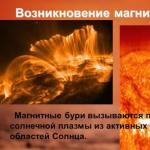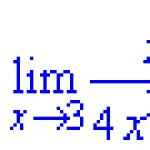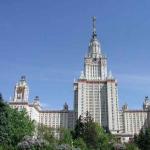Black Sea Higher Naval Order of the Red Star School named after P.S. Nakhimov has a glorious heroic history, both during the Great Patriotic War and in the post-war period. By order of the People's Commissar of Defense No. 035 dated April 1, 1937, the formation of a naval school for training command personnel for ships and fleet units began in Sevastopol.
The first intake of cadets was carried out at the end of July - beginning of August 1937. Classes were held in the open air and in unfinished premises. The cadets lived in tents pitched on the seashore, not far from the coastal battery. Simultaneously with training, using every minute of free time, the cadets worked on the construction of school facilities.
With the beginning of the Great Patriotic War, early graduations took place at the school. The students of the ChVVMU, with their courage, bravery, high professionalism and boundless love for the Motherland, entered the name of their native school into the combat chronicle of the fleet in theaters of military operations.
1,794 graduates of the school passed through the crucible of war with honor, bringing the long-awaited Victory closer. 13 graduates became Heroes of the Soviet Union, and 2 were awarded this title in post-war peacetime. Among the school's students are a Hero of Socialist Labor and five Heroes of the Russian Federation.
After the end of the Great Patriotic War on April 4, 1946, a decision was made to restore the Black Sea Naval School to train commanders of small ships with a training period of two years.
On April 30, 1947, in accordance with the Resolution of the Presidium of the Supreme Soviet of the USSR dated January 27, 1947, the school was awarded the Battle Banner of the unit, under which the ChVVMU, for the first time after the war, took part in the parade of troops of the Sevastopol garrison on May 1, 1947.

April 3, 1975 By Decree of the Presidium of the Supreme Soviet of the USSR for great services in training officers for the Armed Forces and in connection with the 30th anniversary of Victory in the Great Patriotic War of 1941-1945. ChVVMU named after. P.S. Nakhimov was awarded the Order of the Red Star.
From 1937 to 1992 The school trained more than 16,000 officers, of whom 76 graduates became admirals and generals, some became fleet commanders, heads of departments of ministries, and ministers of defense of the USSR, Russia and Ukraine. At the ChVVMU named after P.S. Nakhimov trained naval specialists in navigational, artillery, mine-torpedo, missile, and anti-submarine specialties.

In 1992, by a resolution of the Cabinet of Ministers of Ukraine, on the basis of the former Black Sea Higher Naval Order of the Red Star School named after P.S. Nakhimov and the Sevastopol Higher Naval Engineering School, the Sevastopol Naval Institute of the Order of the Red Star was created. P.S. Nakhimov. In 2009, the Academy of the Naval Forces of Ukraine named after P.S. Nakhimov, which was the only higher naval educational institution in Ukraine until 2014.
After a referendum on declaring the independence of the Republic of Crimea with the subsequent reunification of it and the hero city of Sevastopol with the Russian Federation, on March 20, 2014, President of the Russian Federation Vladimir Putin signed a decree on the creation of the Black Sea Higher Naval Order of the Red Star School named after P.S. Nakhimov.

Currently, the ChVVMU provides full military special training for officers and foremen in 7 specialties. Training is conducted in accordance with the third generation federal state educational standards. The formation of the necessary military-professional competencies among cadets is ensured by strict compliance with the qualification requirements for military-professional training of graduates, approved by the Commander-in-Chief of the Russian Navy.
Training is carried out according to both higher and secondary vocational education programs.
To the Black Sea Higher Naval Order of the Red Star School named after P. S. Nakhimov (CHVVMU)
First, a short overview of the history of this school.
The formation of a naval school for training command personnel for ships and fleet units in Sevastopol began in accordance with the order of the People's Commissar of Defense No. 035 of 04/01/1937. The newly formed VMU was given the name "2nd Naval School".
More than two years later, by order of the People's Commissar of the Navy No. 241 dated June 25, 1939, the 2nd VMU was renamed the Black Sea Naval School. Then, in accordance with the resolution of the Council of People's Commissars No. 963 of 07/05/1940 and the order of the People's Commissar of the Navy No. 294 of 07/10/1940, the school was transferred to the category of higher educational institutions and became known as the “Black Sea Higher Naval School (CHVVMU)”.
After the start of the war in 1941, early graduations took place at the ChVVMU. In August and September 1941, the ChVVMU was evacuated to Rostov-on-Don, and in November 1941, due to the approach of the front, the school was disbanded. Everyone went to the front.
In 1946, the school was restored, and on November 1, 1952, the first post-war graduation of officers took place.
In already “Ukrainian times”, in 1992, ChVVMU was transformed into SVMI - Sevastopol Naval Institute of the Order of the Red Star named after P. S. Nakhimov VMSU. In 2009, on the basis of SVMI, the Academy of the Naval Forces of Ukraine named after P. S. Nakhimov (AVMS) was, in turn, created.
In 2014, the school was once again recreated, and already on June 18, 2014, the first graduation of officers for the Russian Navy took place there - as I understand, the graduating cadets began their training in the Ukrainian Naval Forces.
This album contains photos of cadets recruited in 1939, as well as their teachers and superiors. Almost all of them went through the war, most of them eventually connected with the fleet their entire lives. At the end of the album there is a list of graduates for 1974 - 115 people. Received in 1939 - 349.
I posted all the scanned pages in a separate album “Anniversary album of the 35th anniversary at ChVVMU named after. P. S. Nakhimova 1939-1974 "on Yandex.Photos, here I will show only a small selection of them:











...
Black Sea Higher Naval Order of the Red Star School named after P. S. Nakhimov(ChVVMU) is a naval school founded in 1937 in Sevastopol. In 1992 it ceased to exist, and was founded on its basis. In 2014, the school was recreated on the basis of the Academy of Naval Forces named after P. S. Nakhimov.
Encyclopedic YouTube
-
1 / 5
In the mid-1930s, the only one could no longer provide personnel for the growing needs of the fleet. The directive of the General Staff of the Red Army dated November 19, 1936 provided for the further expansion of the network of naval schools.
By order of the People's Commissar of Defense No. 035 dated April 1, 1937, the formation of a naval school for training command personnel for ships and fleet units began in Sevastopol. The newly formed Navy Medical School was given the name “2nd Naval School.” By analogy with the M.V. Frunze Military Medical School, the new school provided for the training of watch commanders with a wide range of profiles.
For construction in Sevastopol, an area of more than 50 hectares was allocated between Streletskaya and Pesochnaya bays. It was a wasteland where, apart from a casemate-type training coastal artillery battery, built before the First World War, there were no buildings. Flag Officer 2nd Rank Ozolin Yakov Ivanovich was appointed the first head of the 2nd Naval School. Under his leadership, the most complex tasks were simultaneously solved: the construction of educational and residential premises, the creation of an entire, completely autonomous infrastructure, the recruitment of personnel and teaching staff, and the recruitment of cadets.
In 7 months, the main tasks were resolved and on November 7, 1937, the cadets of the first intake took the oath of allegiance to the Motherland on Nakhimov Square.
By order of the People's Commissar of the Navy No. 241 dated June 25, 1939, the 2nd Navy Military School was renamed the Black Sea Naval School.
In accordance with Resolution of the Council of People's Commissars No. 963 of July 5, 1940 and Order of the People's Commissar of the Navy No. 294 of July 10, 1940, the school was transferred to the category of higher educational institutions and became known as the “Black Sea Higher Naval School (CHVVMU).”
In the first years of its existence (1937-1941), cadets of the first classes, officers and midshipmen, living in tents, personally built housing and educational buildings, educational laboratories and other necessary buildings.
The Great Patriotic War
From 1937 to 1992, the school trained more than 16 thousand officers, of which 76 graduates became admirals and generals. The ChVVMU trained naval specialists in navigational, artillery, mine-torpedo, missile, and anti-submarine specialties. 15 graduates received the title of Hero of the Soviet Union, three were awarded the title of Hero of the Russian Federation. 121 graduates graduated from the school with a gold medal.
Ukraine
By Resolution of the Cabinet of Ministers of Ukraine No. 490 of 08/19/1992, on the basis of the former Black Sea Higher Naval Order of the Red Star School named after P. S. Nakhimov and the Sevastopol Higher Naval Engineering School (SVMI).
In 2009, on the basis of SVMI, the Academy of Naval Forces named after P. S. Nakhimov (AVMS) was formed, which was the only higher naval educational institution in Ukraine.
At the beginning of April 2014, after the annexation of Crimea to Russia, part of the teaching staff and cadets were transferred to Odessa.
Russia
After the annexation of Crimea to the Russian Federation on March 20, 2014, President of the Russian Federation Vladimir Putin agreed with the proposal of the Minister of Defense of the Russian Federation Sergei Shoigu to revive the Black Sea Higher Naval School named after P. S. Nakhimov. On June 4, 2014, a corresponding order was issued by the Russian government.
After lowering the flag of Ukraine, the flag of Russia was raised above the school building.
On May 13, 2014, Deputy Commander-in-Chief of the Russian Navy, Vice Admiral Alexander Fedotenkov, presented the Battle Banner to the school.
As of November 2016, more than 1 thousand cadets and 1.5 thousand students study at the school. There are also plans to open a new specialty for training rocket submariners.
Specialties in which training has been provided since 2014
Higher education (duration of study 5 years):
1. Application and operation of coastal missile systems and artillery - Weapons and weapon systems, Small arms, artillery and missile weapons. 2. Underwater technical work for special purposes - Equipment and technologies of shipbuilding and water transport - Construction, repair and search and rescue support of surface ships and submarines. 3. Application and operation of missile weapons of surface ships - Engineering and technology of shipbuilding and water transport, Application and operation of technical systems of surface ships and submarines. 4. Application of special support units and operation of special ammunition - Engineering and technology of shipbuilding and water transport, Application and operation of technical systems of surface ships and submarines.
Graduates are issued a state diploma in a civilian specialty with the appropriate qualification of “specialist” and the military rank of “lieutenant”.
Secondary vocational education (training period 2 years 10 months):
1. Operation and repair of diving and deep-sea equipment - Engineering and technology of shipbuilding and water transport, 260205 Operation of ship power plants. 2. Operation and repair of control systems and missile launch equipment of surface ships - Control in technical systems, Automatic control systems. 3. Operation and repair of coastal missile systems - Control in technical systems, Automatic control systems.
Graduates are issued a state-issued diploma in a civilian specialty with the assignment of the appropriate qualification “technician” and the military rank of “sergeant major of the 2nd article” (excellent students - “sergeant major of the 1st article”).
Heads of the school
- Ozolin Yakov Ivanovich, flagship 2nd rank, (May 1937 - July 1938);
- Ipatov Pavel Alekseevich, captain 1st rank, (September 1938 - September 1940);
- Drozd Valentin Petrovich, rear admiral, (November 1940 - February 1941);
- Apostoli Boris Nikolaevich, captain 1st rank, (March 1941 - November 1941);
- Ladinsky Yuri Viktorovich, captain 1st rank, (March 1946 - July 1946);
- Nikitin Boris Viktorovich, captain 1st rank, (July 1946 - September 1948);
- Zhukov Gavriil Vasilievich, rear admiral, (September 1948 - September 1950);
- Kolyshkin Ivan Alexandrovich, Hero of the Soviet Union, rear admiral, (September 1950 - December 1953);
- Bogdanov Nikolai Georgievich, rear admiral, (December 1953 - May 1957);
- Oktyabrsky, Philip Sergeevich, Hero of the Soviet Union, admiral, (May 1957 - June 1960);
- Kuzmin Alexander Vasilievich, vice admiral, (June 1960 - November 1965);
- Ilya Alekseevich Khvorostyanov, Hero of the Soviet Union, vice admiral, (January 1966 - December 1971);
- Sokolan Stepan Stepanovich, vice admiral, (December 1971 - July 1981);
- Abraham Georgy Nikolaevich, vice admiral, (August 1981 - August 1987);
- Denisenkov Vladimir Andreevich, rear admiral, (August 1987 - August 1992);
- Grinkevich Alexander Petrovich (acting), captain 1st rank (March 20, 2014 - March 25, 2014)
- Smolyak Igor Vladimirovich, rear admiral (March 25, 2014 - May 2015)
- Grinkevich Alexander Petrovich, rear admiral (May 2015 - present)




